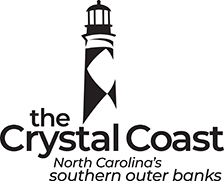Pollination and Heat in the Vegetable Garden
go.ncsu.edu/readext?717083
en Español / em Português
El inglés es el idioma de control de esta página. En la medida en que haya algún conflicto entre la traducción al inglés y la traducción, el inglés prevalece.
Al hacer clic en el enlace de traducción se activa un servicio de traducción gratuito para convertir la página al español. Al igual que con cualquier traducción por Internet, la conversión no es sensible al contexto y puede que no traduzca el texto en su significado original. NC State Extension no garantiza la exactitud del texto traducido. Por favor, tenga en cuenta que algunas aplicaciones y/o servicios pueden no funcionar como se espera cuando se traducen.
Português
Inglês é o idioma de controle desta página. Na medida que haja algum conflito entre o texto original em Inglês e a tradução, o Inglês prevalece.
Ao clicar no link de tradução, um serviço gratuito de tradução será ativado para converter a página para o Português. Como em qualquer tradução pela internet, a conversão não é sensivel ao contexto e pode não ocorrer a tradução para o significado orginal. O serviço de Extensão da Carolina do Norte (NC State Extension) não garante a exatidão do texto traduzido. Por favor, observe que algumas funções ou serviços podem não funcionar como esperado após a tradução.
English
English is the controlling language of this page. To the extent there is any conflict between the English text and the translation, English controls.
Clicking on the translation link activates a free translation service to convert the page to Spanish. As with any Internet translation, the conversion is not context-sensitive and may not translate the text to its original meaning. NC State Extension does not guarantee the accuracy of the translated text. Please note that some applications and/or services may not function as expected when translated.
Collapse ▲Many crops we grow in the home vegetable garden need pollinators to help move the pollen from one flower to the next. Some of those crops include squash, cucumbers, melons, and peppers to name a few. Tomatoes can be pollinated by shaking the plant so the pollen falls off the anther and onto the stigma (part of the flower that receives the pollen).
In some cases, such as cucumbers, the pollinator needs to make several trips to the flower. I’ve seen some pictures of cucumbers that are fat on the end near the stem and skinny or pointed on the end where the blossom is. This is an indication that the flower received some pollination, but not enough to pollinate all the ovaries in the flower. The fat part of the fruit is still edible, but the fruit part is sometimes a little tough.
With the amount of wind we have in Carteret County, tomatoes will often produce without the aid of an insect. That being said tomatoes can be a little finicky when it comes to heat. With many tomato varieties when the nighttime temperatures stay above 75 degrees the plant will produce flowers, but will abort the flowers and not produce fruit because the plant needs all the energy it can produce just to keep the plant alive. These tomatoes will often start producing again when the temperatures have cooled off in the fall.
Speaking of fall, August is the month to plant fall crops of collards, cabbage, broccoli, and other crucifers. Planting them in August will allow them to get big enough that they will make a great harvest in the fall.




